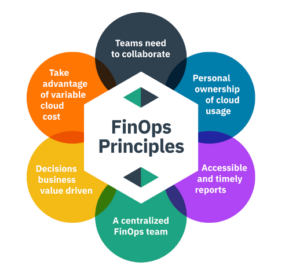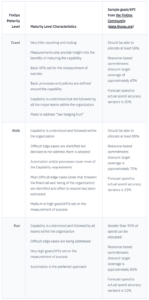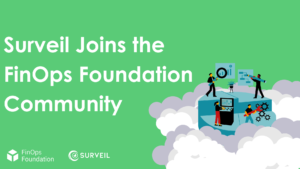Fancy optimising your organisation’s cloud, but still scratching your head over what exactly ‘FinOps’ means? Don’t worry – we’ve got you covered.
Financial Operations (better known as FinOps), has emerged as a framework to perfectly balance optimising costs with maximising value. As we’ve covered on an earlier blog, a FinOps framework can help businesses prevent underused cloud resources and redundant costs – but how does it all work?
The Core Principles
Refined over time, the FinOps Principles as defined by the FinOps Foundation serve as guiding lights for the overall approach. Including six key aspects, the principles cover multiple cloud environments and are completely adaptable to the dynamic nature of cloud services that businesses exist in today.

Via FinOps Foundation: https://www.finops.org/framework/principles/
- Teams need to collaborate
It’s imperative that all business teams work together well to maintain continuous efficiency and to enhance a culture of innovation. As the cloud is always changing in real time, all departments involved need to bring their A-game to the table.
- Decisions are driven by business value of the cloud
By thinking of the cloud as the main driver of innovation, well thought-out decisions around cost, quality and speed can be made.
- Everyone takes ownership of their cloud usage
By letting everyone take ownership of their own cloud usage across the business, budgets can be carefully reviewed and cloud usage managed across departments.
- Data should be accessible and timely
Timely sharing of data allows for real-time visibility, driving optimised cloud utilisation and fostering more efficient business behaviours. Ensuring accessible cost data allows informed decision making throughout the whole business.
- A centralised team drives collaboration
A centralised team – comprised of representatives from across the organisation who are all on the same page – will play a crucial role in encouraging best FinOps practices which align well with security priorities.
- Take advantage of the variable cost model of the cloud
The variable cost model of the cloud shouldn’t be viewed as a risk; instead it’s an opportunity to deliver value. Adopting an agile and proactive approach to cloud optimisation with FinOps allows for better resource allocation and value delivery.
These six principles offer a comprehensive roadmap for you and your business, aligning operational efficiency with financial stability. So, how do you know what stage your business is at? That’s where the FinOps Maturity Model comes in.
FinOps Maturity Model
The Maturity Model serves as a pivotal component within the FinOps framework, offering insights for evaluating current financial status and charting a course toward what’s next. This model serves as a navigational tool, enabling well-informed decisions by showing the precise steps required to reach the next stage of the maturity framework. Employing a structured ‘crawl, walk, run’ approach, the model empowers anyone to embark on their FinOps journey at a manageable pace, without it feeling too overwhelming.

Via FinOps Foundation: https://www.finops.org/framework/maturity-model/
Embracing the Maturity Model as an integral part of your FinOps journey presents a unique opportunity to measure the transition from a basic understanding of cloud costs to a sophisticated, value-centric approach underpinned by informed decision-making. This process not only enhances your understanding of FinOps but also equips you with the tools to drive value and efficiency within your organisation’s cloud ecosystem.
Since joining the FinOps Foundation earlier this year, we’ve been busy contributing to initiatives and working towards certifications. If you’re interested in joining the conversation and maximising your business’ potential, be sure to visit the FinOps Foundation website to find out more.
Want to find out more about the FinOps framework and lifecycle? Read our recent blog to understand how your business can benefit from aligning your cloud priorities.






